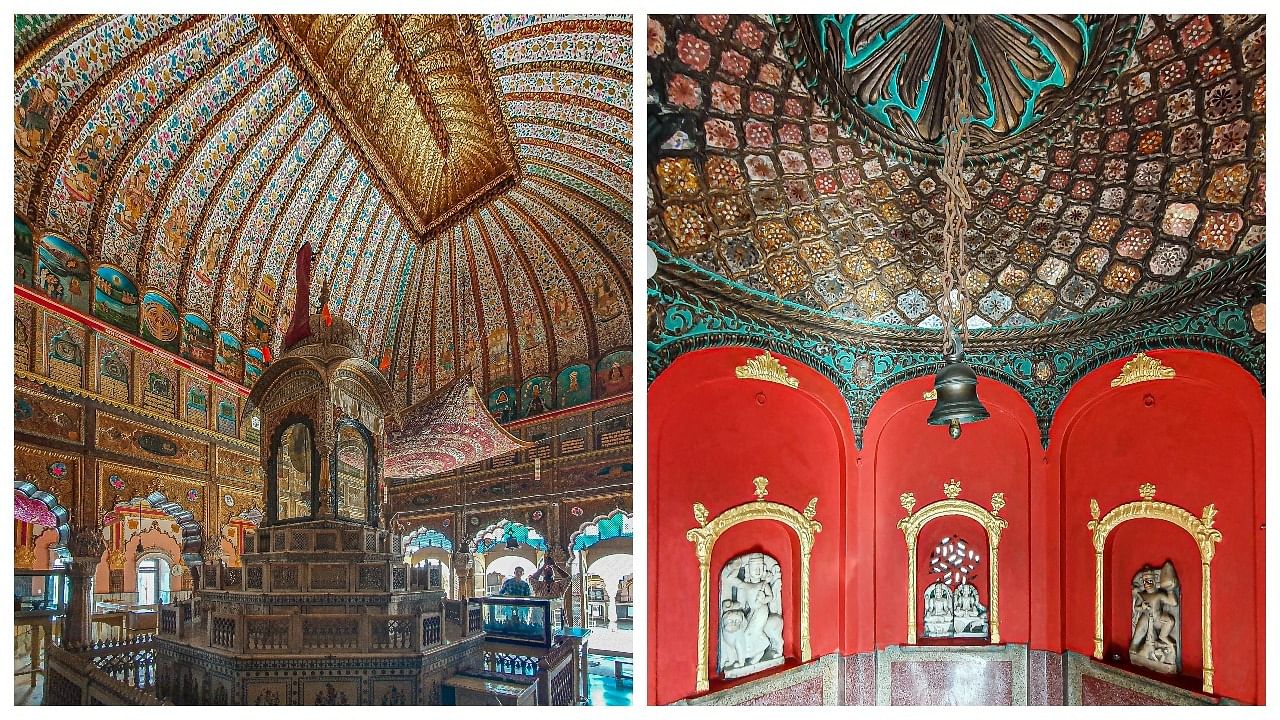
When many Indians are debating over dinner tables and family get-togethers whether the Taj Mahal was a Hindu temple named Tejo Mahalaya or if Raja Vikramaditya built Qutab Minar instead of Qutb-ud-Din Aibak, two historians are working hard to counter the cacophony.
Rana Safvi, a Delhi-based historian, writer, and translator, and Sam Dalrymple, a historian specialising in partition history who divides his time between London and Delhi, are on a mission to explore a hidden aspect of Old Delhi.
The Mughal Era Mandir Project—as their work is called—is an Instagram photo series that seeks to highlight the Hindu and Jain heritage of Shahjahanabad in Old Delhi.
Catherine B. Asher, a stalwart in the field of South Asian art history, in her seminal book “Architecture of Mughal India,” published as part of the “The New Cambridge History of India,” claims that over a 100 historic Mughal era mandirs exist in Old Delhi—which was motivation enough for Safvi and Dalrymple to do a photo series on them.
“We were on a history walk through Old Delhi when we discovered that the frescoes in Charan Das ki Baghichi had been “renovated,” i.e. painted over with new patterns and paint,” said Dalrymple, 25, to DH. “These are probably the oldest surviving Vaishnav frescoes in Old Delhi. We were shocked they weren't protected, so we did a bunch of Instagram stories about it, which went unexpectedly viral. People were amazed that Delhi even has historic temples.”
For the unversed, Sant Charan Das was a Hindu ascetic from Alwar who was extremely close to Emperor Muhammad Shah Rangeela. Charan Das ki Baghichi or “The Garden of Charan Das,” located in Mohalla Charan Das, near Chawri Bazar in Chandni Chowk, is possibly the only surviving Mughal samadhi built for a Hindu saint.
“The Charan Das ki Baghichi is one of the most exciting and impressive of our discoveries. Emperor Muhammad Shah Rangeela is said to have been a disciple of Sant Charan Das. Whether that's a fact or not, he donated four villages in the Chattarpur area for the upkeep of the temple,” said Safvi who has authored “Shahjahanabad: The Living City of Old Delhi,” among many other books.
Elaborating on the project's aim, Dalrymple mentioned that it’s intended to raise awareness about Delhi's incredible Hindu and Jain heritage.
“Unfortunately, not a single Mandir we visited is protected, which allows for the artworks to be changed at will, as seen in Charan Das ki Baghichi, which inspired the whole series. Safvi has long said that the Jain mandirs of Shahjahanabad are the best-kept secret of India's capital, and I'm tempted to agree,” he said.
“The temples are exquisitely decorated and, in the case of Jain temples, beautifully preserved too. It gives us an idea of what the city would have looked like once,” Safvi added.
Dalrymple said, “We visited about twenty richly decorated mandirs over two weekends. My favourite was the Ghanteshwar Mandir in Katra Neel, Chandni Chowk. It was built in the reign of Bahadur Shah Zafar and is covered in miniature paintings. Plus, the Jagannath Mandir in Esplanade Road, where the Devtas are housed.
So will the project affect the increasing polarisation in the country in any way?
“I hope so,” answered Safvi. “I hope it opens our minds to the idea of a harmonious past.”
“I think people often forget that some of the most powerful people in Mughal India were Hindus and Jains. There's this tendency to collapse Mughal India down to its rulers, but of course, it was a government like any other,” said Dalrymple. “For example, Naya Jain Mandir in Dharampura—which has stunning paintings—was commissioned by the Mughal treasurer Raja Harsukh Rai.”
“It's difficult to paint a 350-year-old empire with a single brush. The first and last emperors—Babur and Bahadur Shah Zafar—lived almost 300 years apart. It has only been 170 years since the Mughal Empire ended, so one can only imagine how different their lives, times, and reigns were,” said Dalrymple. “Please don't let preconceived notions or WhatsApp forwards prejudice you. The reality may be different from what you think it is,” Safvi concluded.
(Kartikeya is a journalist from Delhi passionate about covering culture, politics, conflict, food, and human interest stories.)